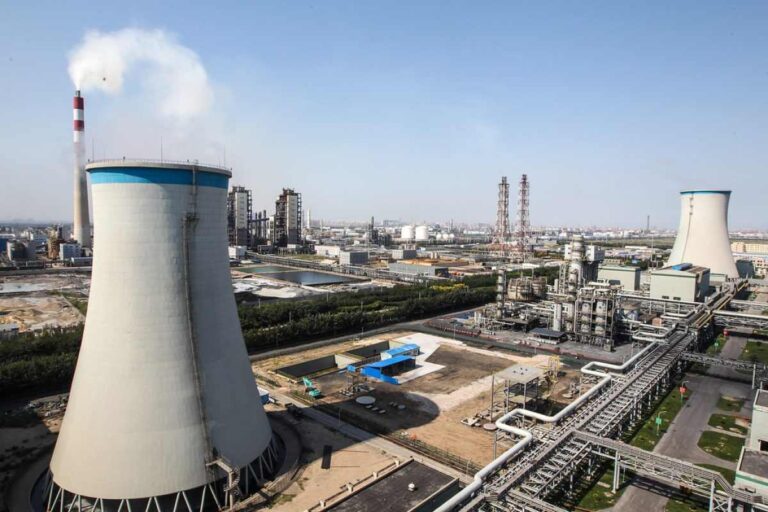10 Most industrialized countries in the World (2024)

The world’s most industrialized countries have an enormous impact on global economics and politics. These countries represent a significant proportion of the world’s GDP and contribute to technological advancements and innovations.
Among the top industrialized countries in the world are China, the United States, Japan, Germany, India, South Korea, the United Kingdom, Italy and Mexico. These countries have established themselves as major players in the global market, with their economies thriving on their industrial production, manufacturing, and technological advancements.
The World’s most industrialized countries
1. China
China is the world’s largest manufacturing economy and the second-largest economy overall, with a GDP of over $15 trillion. The country has undergone rapid industrialization and urbanization in recent decades, transforming from a primarily agrarian society to a leading manufacturing and technological powerhouse. China is home to many of the world’s largest and most innovative companies in a wide range of sectors, including electronics, automotive, aerospace, and renewable energy.
Despite its economic successes, China faces several challenges related to its industrial development. The country is heavily reliant on fossil fuels, which contributes to high levels of pollution and environmental degradation. Additionally, concerns have been raised about worker exploitation and inadequate labor standards in some of China’s factories.
2. United States
With a GDP of over $22 trillion, the United States holds the distinction of being the world’s largest economy and a key industrial player. Some of the world’s largest and most groundbreaking companies operate within its borders, particularly in the realms of healthcare, finance, and technology.
The US boasts a comprehensive infrastructure consisting of highways, railways, and airports, facilitating efficient transportation of both people and goods across the country and beyond. With a focus on innovation and research, the US has spearheaded breakthroughs in several fields, including biotechnology, renewable energy, and artificial intelligence.
Notwithstanding its economic might, the US faces some challenges in its industrial development. These include a widening wealth disparity, increasing political polarization, and inadequate funding for research and infrastructure.
3. Japan
Japan is the world’s fourth-largest economy and a leading industrial power, with a GDP of over $5 trillion. The country is known for its advanced manufacturing and technological capabilities, particularly in the areas of electronics, robotics, and automotive production. Japan is home to many of the world’s most innovative companies, including Toyota, Sony, and Honda.
Despite its economic successes, Japan faces several challenges related to its industrial development. The country has an ageing population and a shrinking workforce, which has led to labour shortages and declining productivity. Additionally, Japan is heavily reliant on imported energy sources, which makes it vulnerable to global energy price fluctuations.
4. Germany
Germany is the largest economy in the European Union and a leading industrial power, with a GDP of over $4 trillion. The country is known for its advanced manufacturing capabilities and innovative engineering, particularly in the areas of automotive, machinery, and chemicals.
Germany is home to many of the world’s most successful and renowned companies, including BMW, Siemens, and BASF. Germany has made significant progress in recent years toward transitioning to a more sustainable and climate-friendly economy.
The country has set ambitious targets for reducing greenhouse gas emissions, increasing the use of renewable energy, and promoting energy efficiency. Germany has also implemented policies and initiatives aimed at reducing waste and promoting circular economy practices.
However, Germany also faces several challenges related to its industrial development, including an ageing population and workforce, rising energy costs, and increasing competition from emerging economies such as China.
5. India
India is the world’s sixth-largest economy and a rapidly growing industrial power, with a GDP of over $3 trillion. The country is known for its diverse and rapidly expanding industrial sectors, including manufacturing, technology, and services. India is home to many innovative and successful companies, particularly in the areas of software development, pharmaceuticals, and renewable energy.
However, India faces several challenges related to its industrial development, including a lack of adequate infrastructure, regulatory barriers, and environmental concerns. The country also faces significant social and economic challenges, including poverty, inequality, and a lack of access to basic services such as healthcare and education.
6. South Korea
South Korea is a leading industrial power in Asia, with a GDP of over $1.6 trillion. The country is known for its advanced manufacturing capabilities and innovative technologies, particularly in the areas of electronics, automotive, and telecommunications.
South Korea is home to many of the world’s most successful and innovative companies, including Samsung, LG, and Hyundai. South Korea has made significant progress in recent years toward reducing its carbon footprint and transitioning to a more sustainable and eco-friendly economy.
The country has set ambitious targets for reducing greenhouse gas emissions and increasing the use of renewable energy, and many of its companies have implemented initiatives aimed at achieving these goals.
7. United Kingdom
The United Kingdom is a leading industrial power in Europe, with a GDP of over $2.7 trillion. The country is known for its advanced manufacturing capabilities, particularly in the areas of aerospace, automotive, and pharmaceuticals.
The UK is home to many of the world’s most successful and innovative companies, including Rolls-Royce, GlaxoSmithKline, and British Airways. The UK faces several challenges related to its industrial development, including post-Brexit uncertainty, rising energy costs, and a lack of investment in research and development.
The country has also set ambitious targets for reducing greenhouse gas emissions and increasing the use of renewable energy, and many of its companies have implemented initiatives aimed at achieving these goals.
8. France
France is a leading industrial power in Europe, with a GDP of over $2.6 trillion. The country is known for its advanced manufacturing capabilities, particularly in the areas of aerospace, automotive, and nuclear energy.
France is home to many of the world’s most successful and innovative companies, including Airbus, Renault, and EDF. France has made significant progress in recent years toward reducing its carbon footprint and transitioning to a more sustainable and eco-friendly economy.
The country has set ambitious targets for reducing greenhouse gas emissions, increasing the use of renewable energy, and promoting energy efficiency. France is also a leading proponent of circular economy practices, which aim to reduce waste and promote the reuse of resources.
9. Italy
Italy is a leading industrial power in Europe, with a GDP of over $2 trillion. The country is known for its advanced manufacturing capabilities, particularly in the areas of fashion, luxury goods, and automotive production.
Italy is home to many of the world’s most successful and renowned companies, including Ferrari, Gucci, and Fiat Chrysler. Italy faces several challenges related to its industrial development, including an ageing population and workforce, a lack of investment in infrastructure and research and development, and regulatory barriers.
The country has also set ambitious targets for reducing greenhouse gas emissions and increasing the use of renewable energy, and many of its companies have implemented initiatives aimed at achieving these goals.
10. Mexico
Mexico is a Spanish country in North America and is the world’s tenth leading industrial power, with a GDP of over $2 trillion. Mexico is home to some of the biggest manufacturers of big tobacco, clothing, motor vehicles, food and beverages, home appliances and others.
The North American nation is also home to some of the world’s biggest aviation and medical manufacturing.
Conclusion
The industrialized countries mentioned above have been able to achieve their status through significant investment in research and development, as well as the adoption of innovative technologies.
Their dominance in the industrial sector has enabled them to become major players in the global economy, contributing significantly to the production and manufacture of goods worldwide.
As they continue to drive technological advancements, these countries remain crucial players in global politics and economics, shaping the direction of the world’s development and progress.
Don't miss a thing. Follow us on Telegram and Follow us on WhatsApp. If you love videos then also Subscribe to our YouTube Channel. We are on Twitter as MakeMoneyDotNG.





